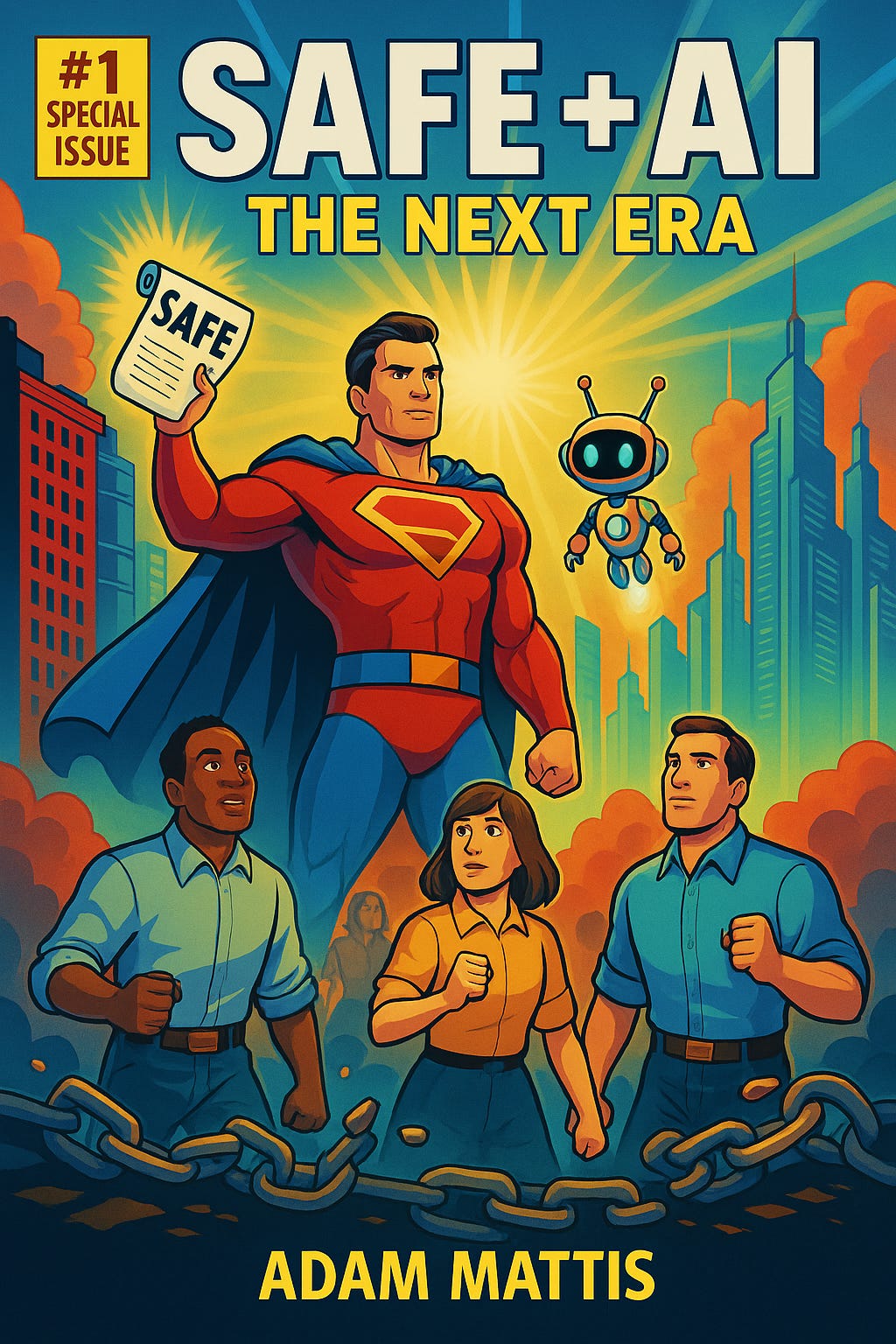We Were Fast. But The World Got Faster.
A Fictional First-Person Story of an enterprise leveraging SAFe + AI
I had a bit of fun with this post and developed a short graphic novel to go with it. Have a look HERE!
In 2020, our company was a household name, but a slow, fractured, siloed version of itself. We were known more for what we used to be than where we were going. Every business unit had its own roadmap. Product teams were buried under layers of approvals. Customer insight? Delayed, diluted, and distant.
Releasing anything meaningful in under 12 months felt like fiction.
We called on our trusted partner, ApexWorks, to help address the issue—and they introduced us to the Scaled Agile Framework (SAFe).
It wasn’t love at first PI. But over time, step by step, ART by ART, we saw the fog lift. Strategic alignment became real. We began operating with a shared purpose and a clear focus on delivering value. Dependencies that used to take months to resolve began clearing in days. And not just through dependency management—but by thoughtfully investing in our business and technical architecture, we eliminated most dependencies entirely.
Our portfolio began to flow.
By 2022, we were more than agile: we were becoming a digital-first, customer-obsessed organization.
And it paid off.
We started launching new product lines twice as fast. NPS climbed. Employee engagement skyrocketed. We had a system – a real operating model – that linked strategy to execution across the entire enterprise.
I believed in SAFe then. I still do.
But by 2025, something felt… off.
Not broken. Not slow in the old way. But outpaced.
We were releasing incrementally every two weeks, teams were testing and validating bets in hours. We carefully planned our increments, but digital-native disruptors were letting AI generate and prioritize entire backlogs in real time, based on simulated customer data and enterprise capacity.
We weren’t losing. But I could feel the gap closing.
So we adapted. Again.
We re-engaged ApexWorks. We partnered directly with the experts at Scaled Agile. Together, we asked:
What if AI wasn’t just bolted onto SAFe, but embedded at its core?
We started by bringing AI into our Product Management practice. Innovation cycles that once took days now took hours. We could hypothesize, prototype, and validate new products—both physical and digital—using AI-driven digital twins. They weren’t perfect proxies for real users, but they got us to a 90% solution faster than ever.
From there, we scaled. With our AI-enabled work management system, Atlascore, Features, Stories, Dependencies, Risks, even PI Objectives, were generated for consideration in near real time.
And PI Planning changed; not by shrinking, but by shifting focus.
Instead of spending two days grinding through prioritization and backlog breakdown, much of that work was already system-generated and validated before anyone entered the room, the two days of PI Planning became about context, creativity, and connection: building shared understanding around business priorities, aligning on AI-generated objectives, pressure-testing risks, and negotiating complex dependencies.
Teams left not just with plans, but with energy. Planning was no longer bogged down in logistics. Teams had space to think about how to deliver impact, not what to build.
Another big shift? It wasn’t just in planning. It was in doing.
At first, teams worried about being replaced. But AI didn’t take their jobs, it made them faster, sharper, more relevant. Agentic AI handled the busywork: data cleaning, test framing, compliance checks, documentation; while teams focused on creating, innovating, solving.
The results spoke for themselves:
Defect rates down 42%.
Market windows were hit.
The right things delivered the first time, validated before a single line of code was written.
Today, our Portfolio Kanban is powered by AI-driven digital twins. Strategic bets, like entering a new DTC channel, are modeled before investment. We simulate the impact on customer journeys, enterprise architecture, financials, and value flow. We don’t argue; we analyze. AI shows us which initiatives align, which cannibalize, and which are likely to stall.
And with ServiceLine, our connected workflow and operations intelligence platform, we see how work flows across the enterprise in real time. Architecture and operational debt are mapped, measured, and prioritized alongside new investments.
PI Planning is still sacred. Still human. But now, 70% of the heavy lifting is already done by AI. The ART teams focus on delivering outcomes, not debating outputs. And with the noise cleared away, collaboration has never been sharper. Conversations aren’t “what do we build?” but “what’s the best way to deliver customer impact?”
We’re not just digital-first anymore. We’re AI-augmented.
Customers get features they didn’t know they needed, right when they need them.
Product Managers spend less time debating, more time delighting.
Engineers innovate instead of refining backlogs.
Strategic pivots happen in days, not quarters.
And SAFe?
It’s never been faster. Or smarter.
In 2020, SAFe helped us scale agility.
In 2025, SAFe+AI helped us evolve it.
The next chapter? It’s already in simulation.



Love this - SAFe is still essential for the business agility but AI will eliminate more waste, steer direction and value refocused on customers. Current AI position - I believe could benefit from LPM flow so MVPs of AI have realistic expectations and value directives plus feasibility and viability assessed so we don’t fail on AI initiatives (as much) but learn from them faster.